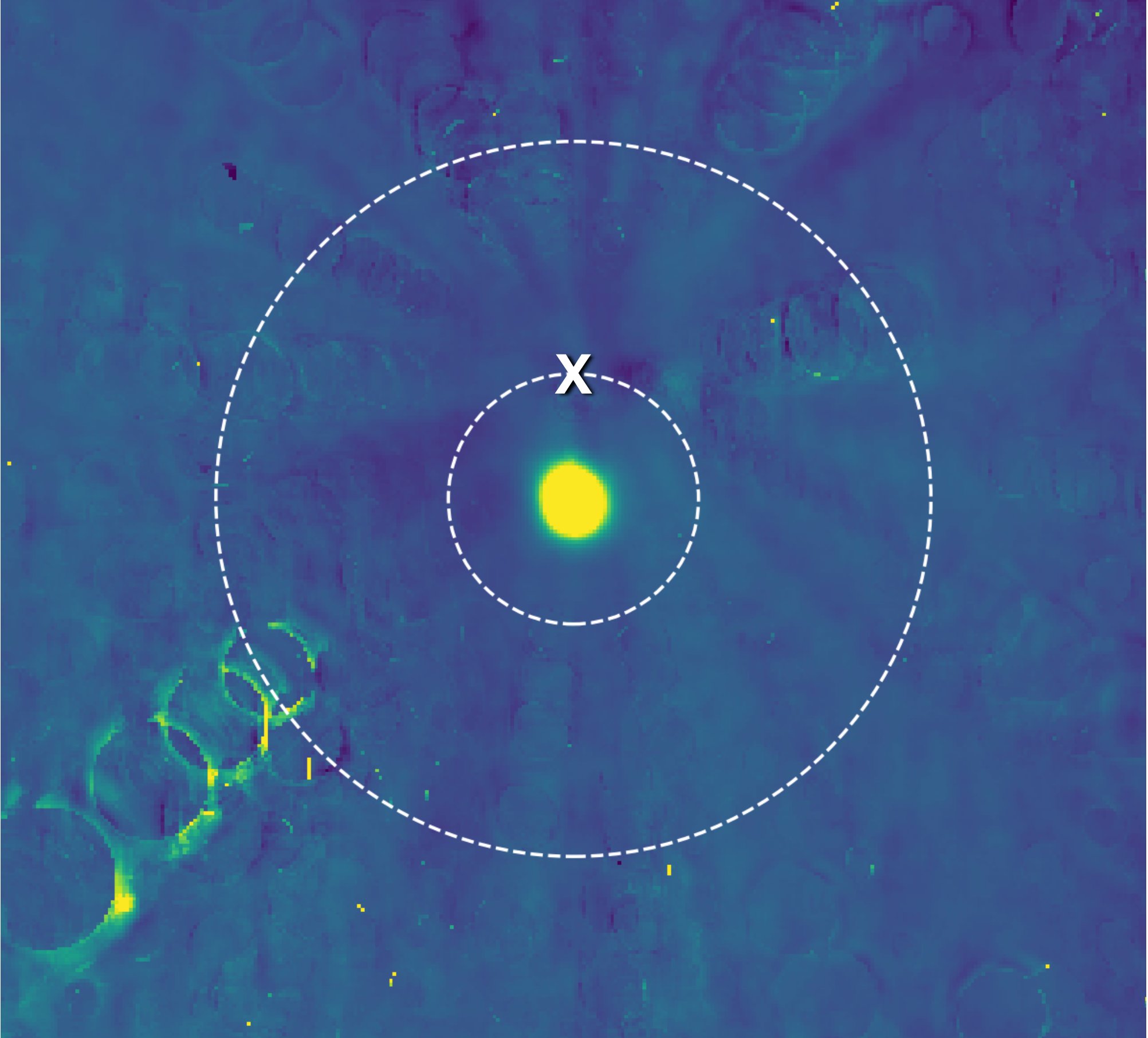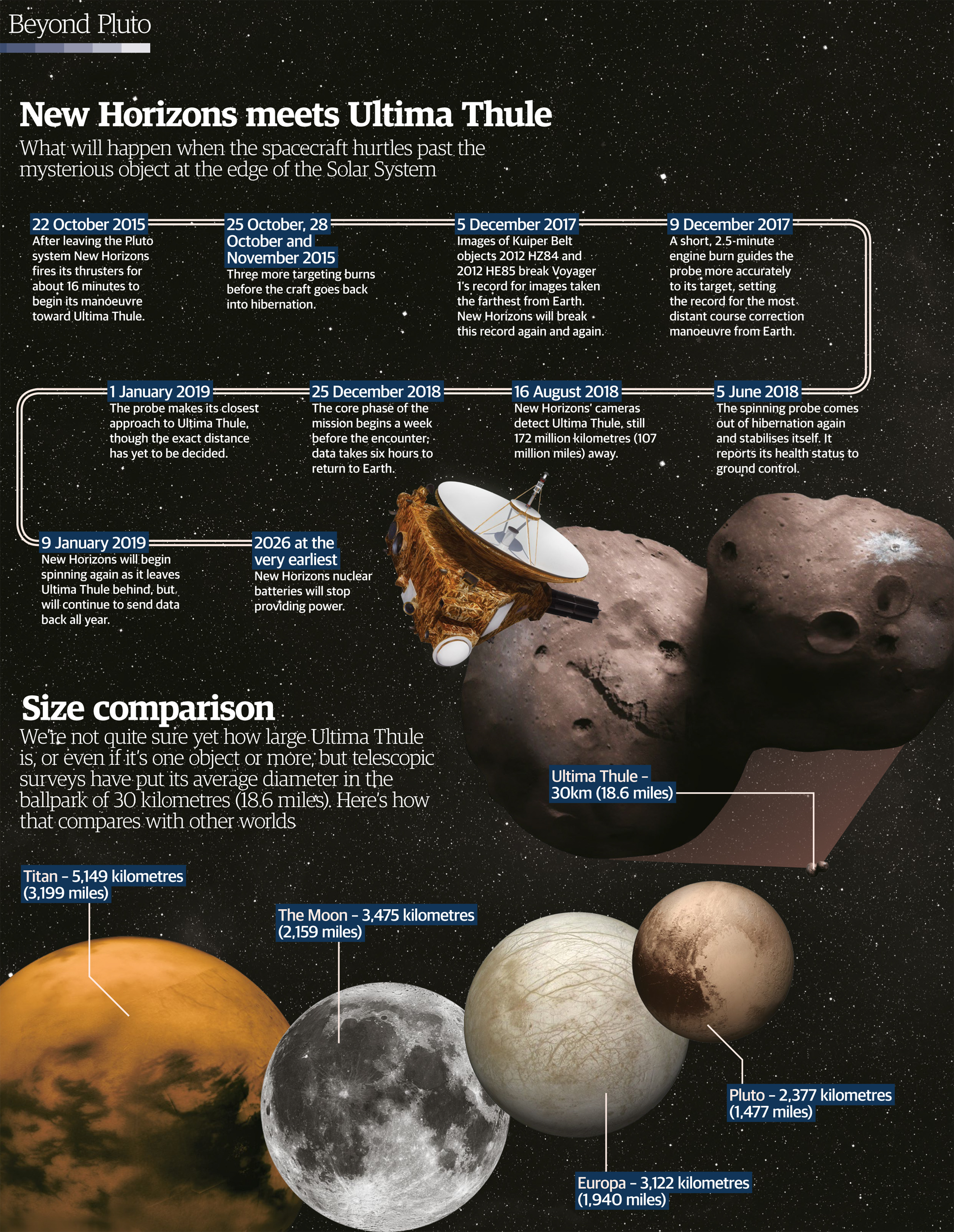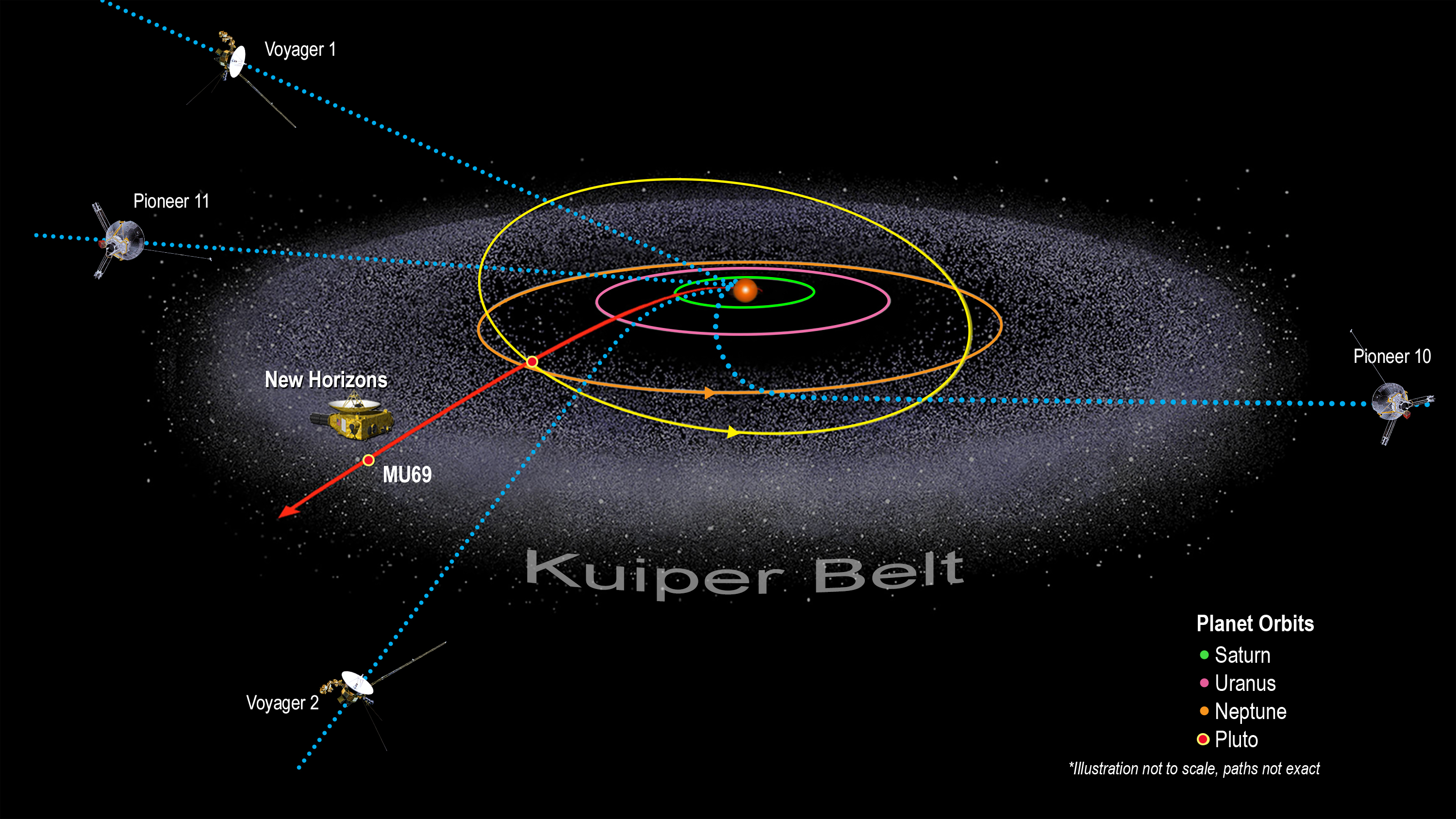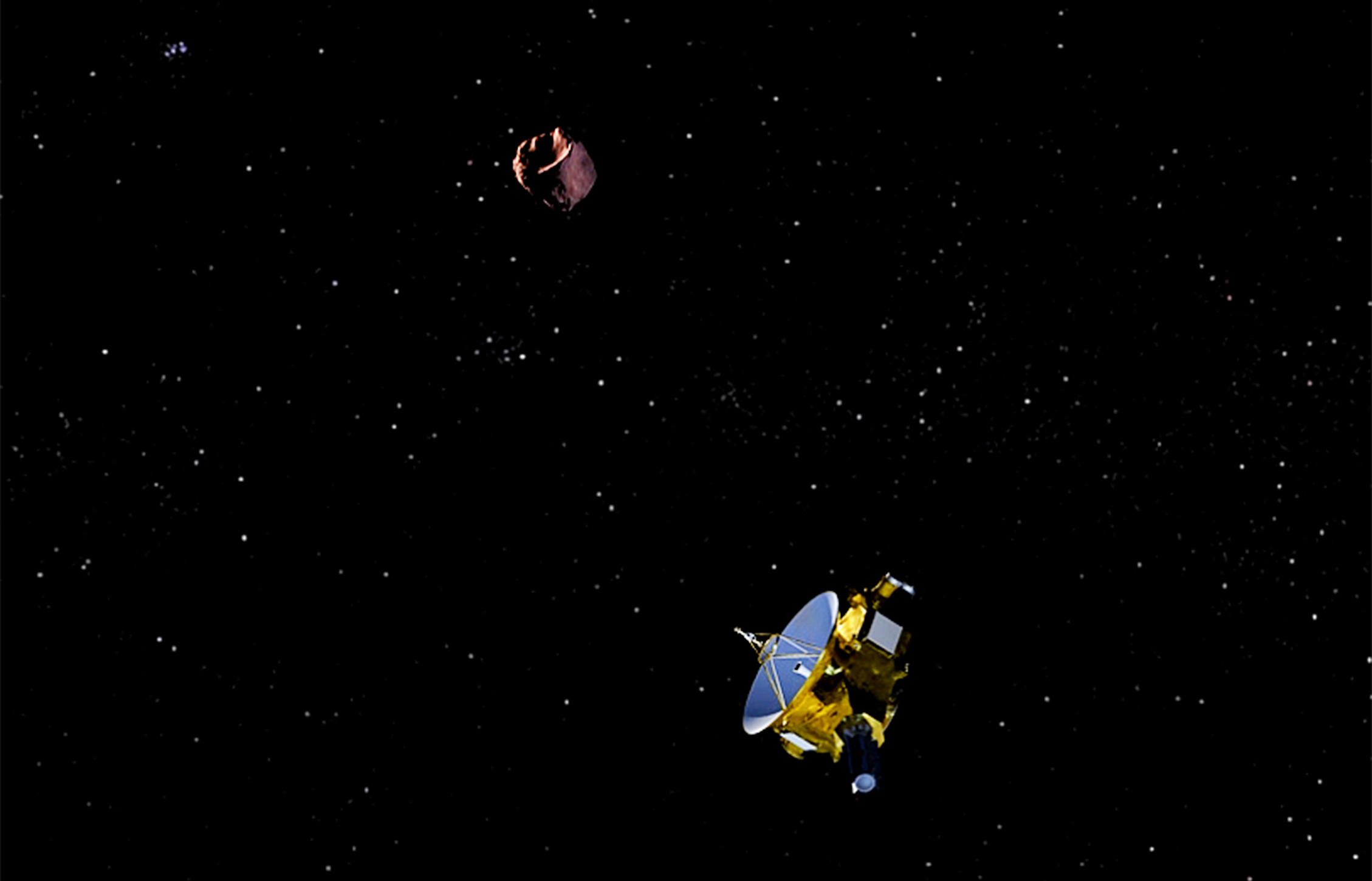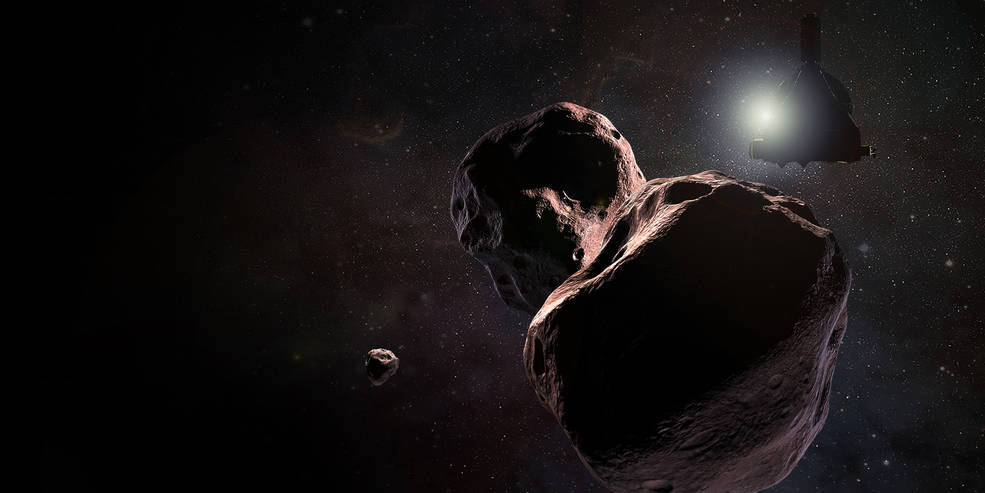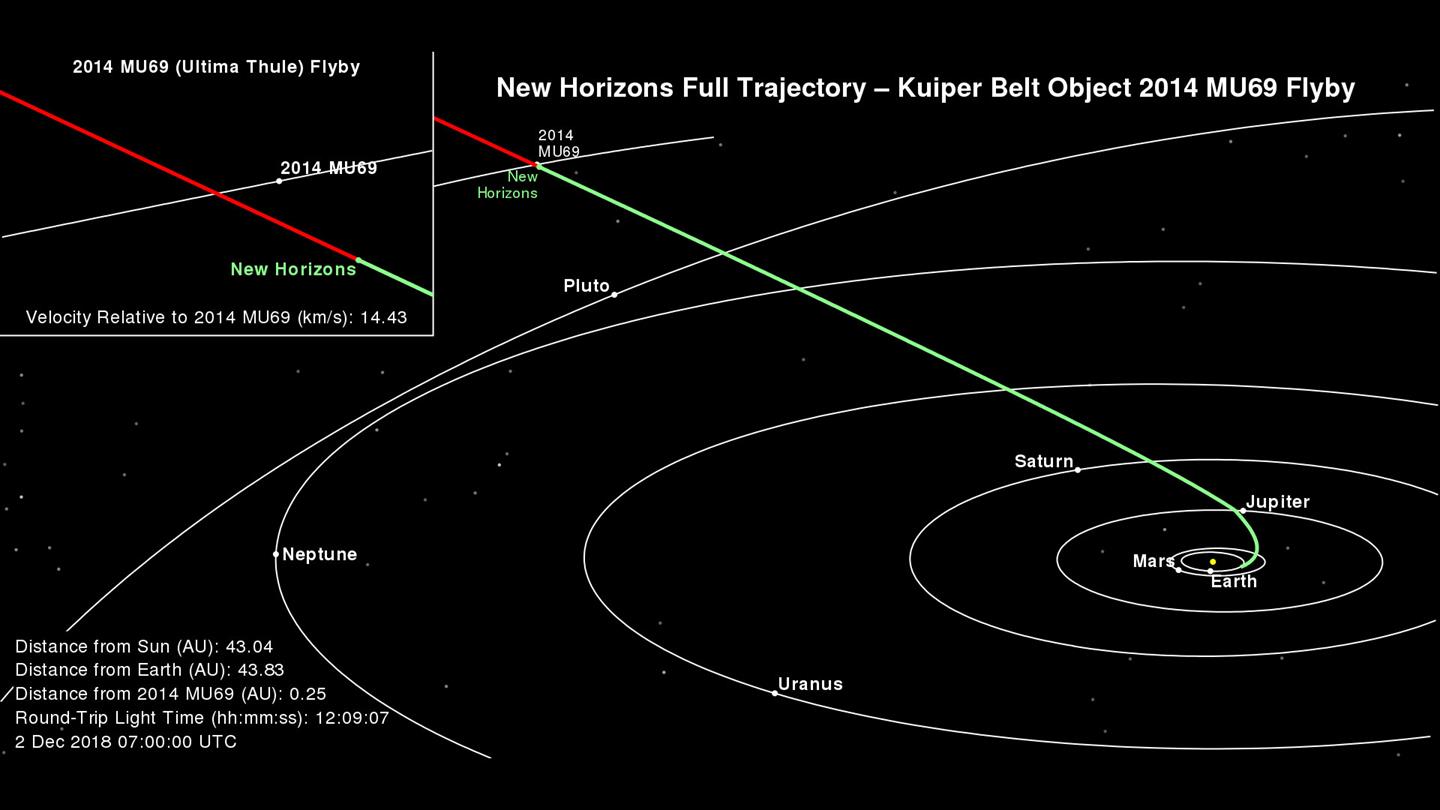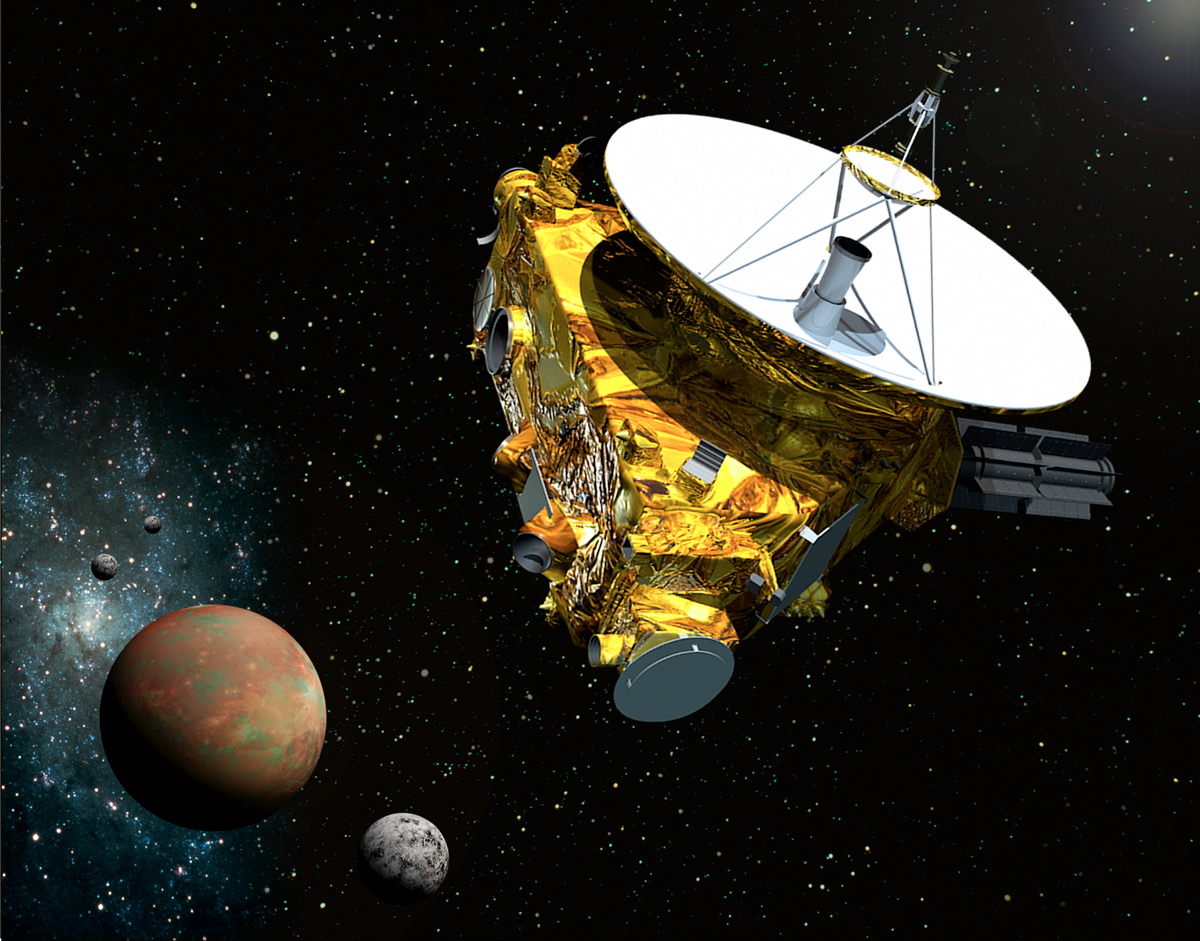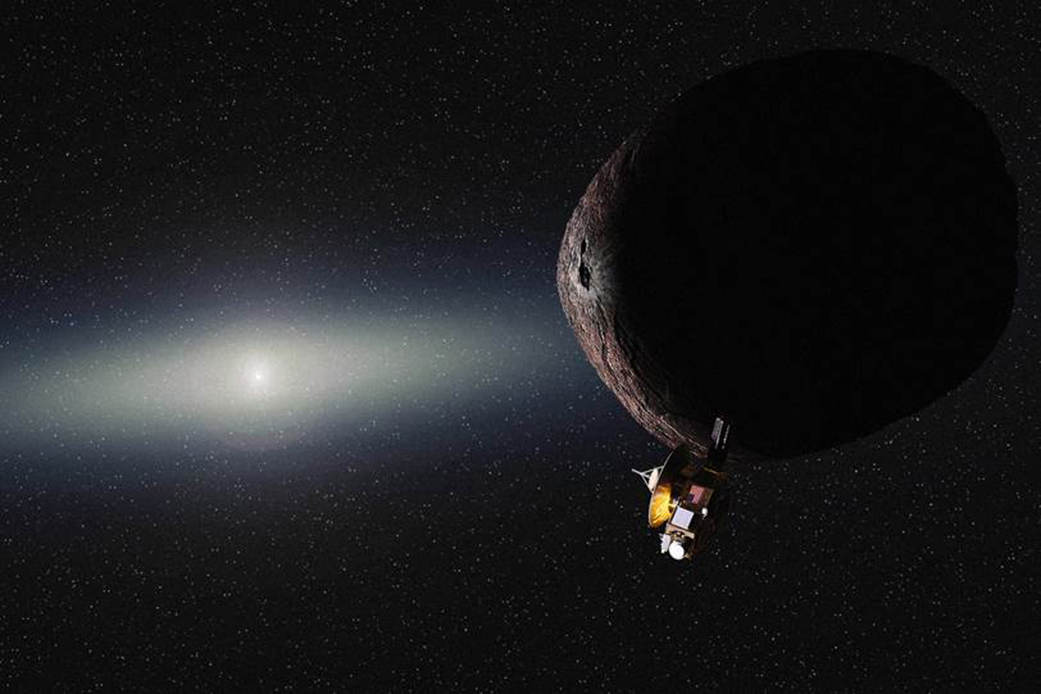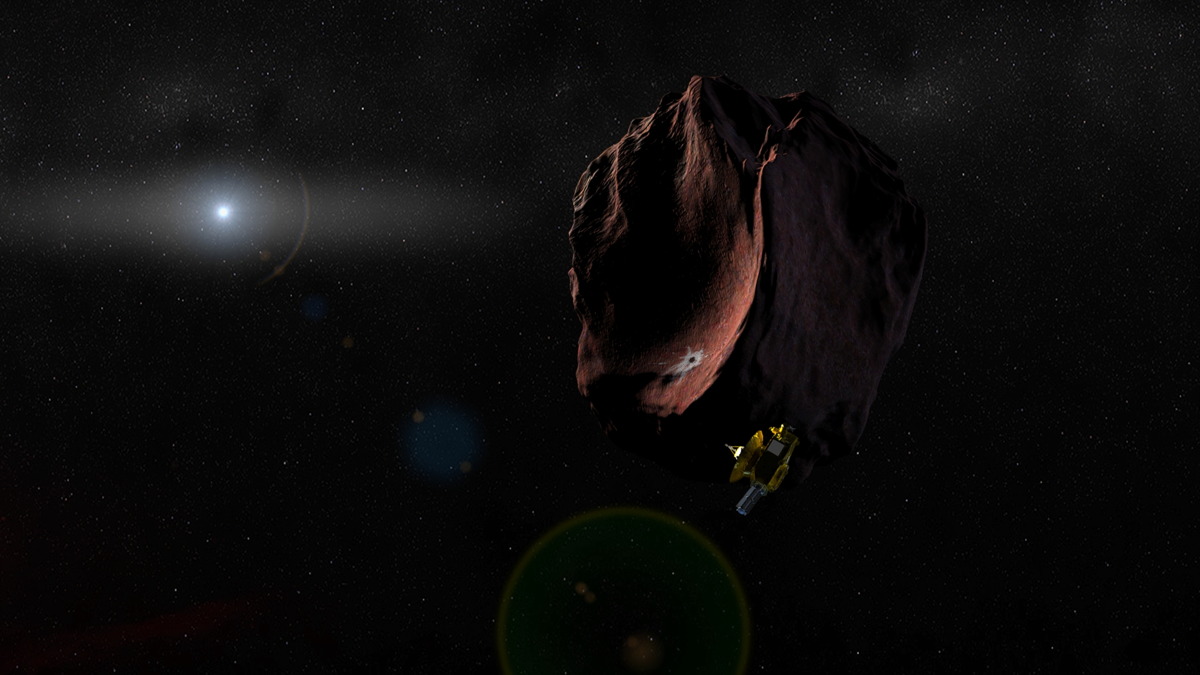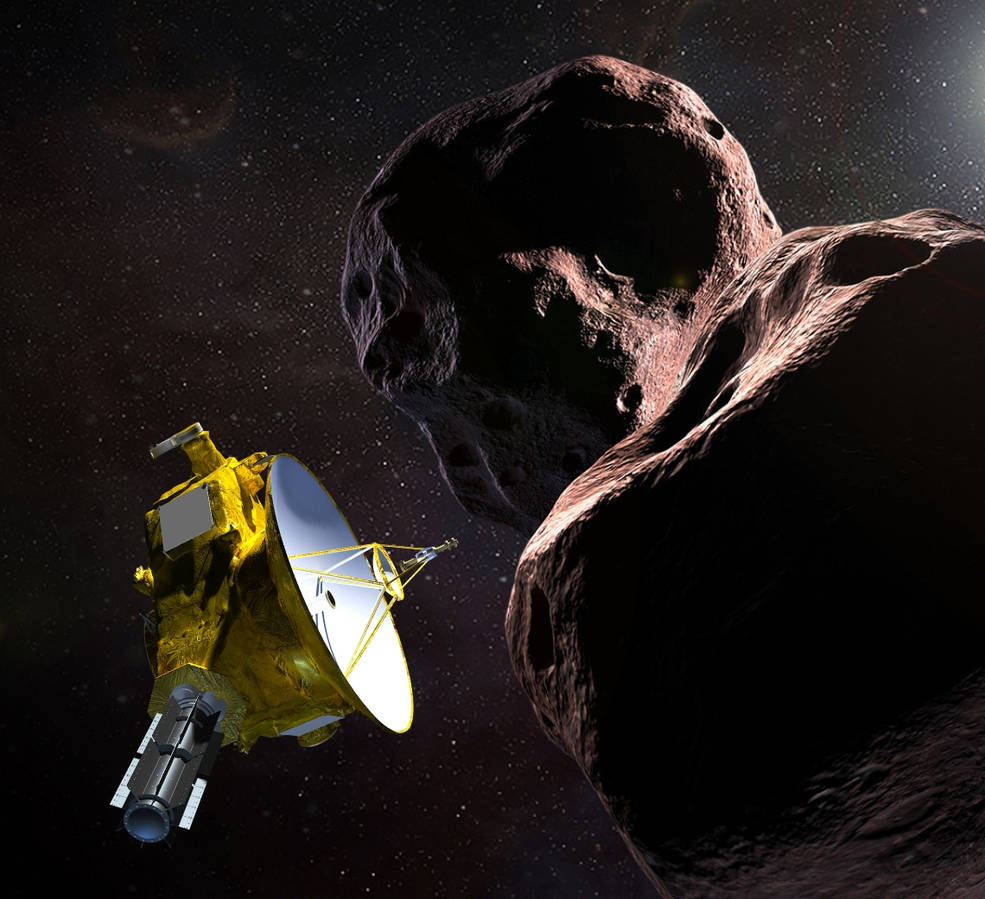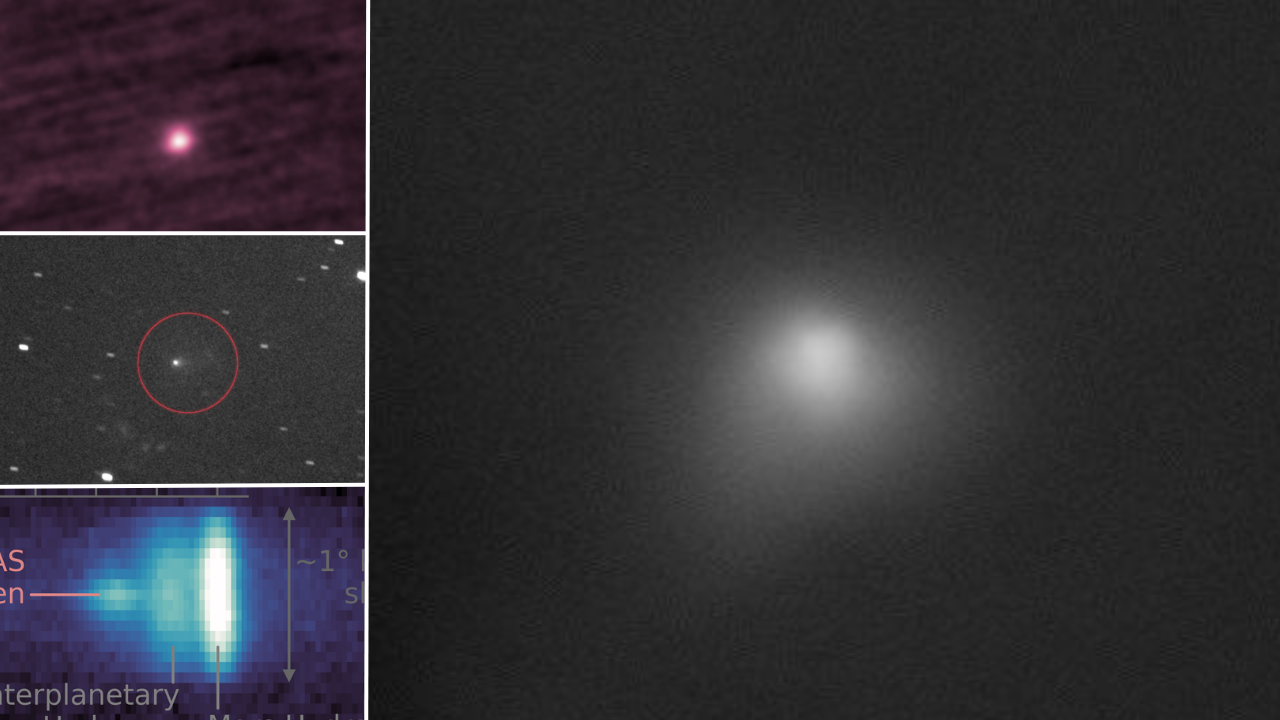Ultima Thule in Pictures: Flyby Views of 2014 MU69 by New Horizons
new-horizons-path-ultima-thule
This image was made by combining hundreds of photos taken between August and mid-December by New Horizons' Long Range Reconnaissance Imager. It has been colored using deep blue for the darkest regions and yellow for the brightest. Ultima Thule is the bright-yellow spot in the middle, and New Horizons' two possible flyby distances are indicated by the two concentric circles. The mission has decided to fly along the closer path, toward the target point marked by an X. Individual images contain many background stars, but by combining images taken at different distances from Ultima Thule, most of the stars can be identified and removed. However, some of them leave behind traces, which can be seen as faint circles radiating away from the target point.
New Horizons Ultima Thule Flyby
A timeline of NASA's New Horizons spacecraft on its way to a Jan. 1, 2019 flyby of Ultima Thule after visiting Pluto in 2015.
The Road to Ultima Thule
New Horizons and Ultima Thule will be 4.1 billion miles away when it visits the Kuiper Belt object. This chart shows the path of New Horizons compared to other probes that have left the solar system.
A Fast Flyby
New Horizons will whiz by Ultima Thule at a mind-blowing 32,000 mph (51,500 km/h), with one-way signal time to Earth taking over 6 hours!
A 'Close' Flyby
At its closest point, New Horizons will be about 2,200 miles (3,540 km) from Ultima Thule. That's about the distance between Los Angeles and Washington, D.C., with Ultima Thule appearing about as large to New Horizons as the full moon does to observers on Earth.
Historic Trajectory
The trajectory of NASA's New Horizons spacecraft on its road to the Kuiper Belt object Ultima Thule (2014 MU69) on Jan. 1, 2019. NASA launched the probe toward Pluto in Jan. 19, 2006. It flew by Pluto in July 2015.
A Pluto Voyager
New Horizons was originally built to fly by the dwarf planet Pluto and its five moons, which the spacecraft accomplished in July 2015.
Breaking space news, the latest updates on rocket launches, skywatching events and more!
A New Target: 2014 MU69
Shortly after New Horizons' success at Pluto, it got a new mission. NASA announced on Aug. 28, 2015, that it had selected 2014 MU69 as its first choice for the probe's secondary mission.
A Red Rock?
One thing scientists do know about Ultima Thule is that it seems to have a reddish hue. The cause, though, is not exactly known.
Flyby Imagined!
What does Ultima Thule look like? Here's one artist's illustration of New Horizons flying by the Kuiper Belt object. But Ultima Thule may look very different.

Tariq is the award-winning Editor-in-Chief of Space.com and joined the team in 2001. He covers human spaceflight, as well as skywatching and entertainment. He became Space.com's Editor-in-Chief in 2019. Before joining Space.com, Tariq was a staff reporter for The Los Angeles Times covering education and city beats in La Habra, Fullerton and Huntington Beach. He's a recipient of the 2022 Harry Kolcum Award for excellence in space reporting and the 2025 Space Pioneer Award from the National Space Society. He is an Eagle Scout and Space Camp alum with journalism degrees from the USC and NYU. You can find Tariq at Space.com and as the co-host to the This Week In Space podcast on the TWiT network. To see his latest project, you can follow Tariq on Twitter @tariqjmalik.
